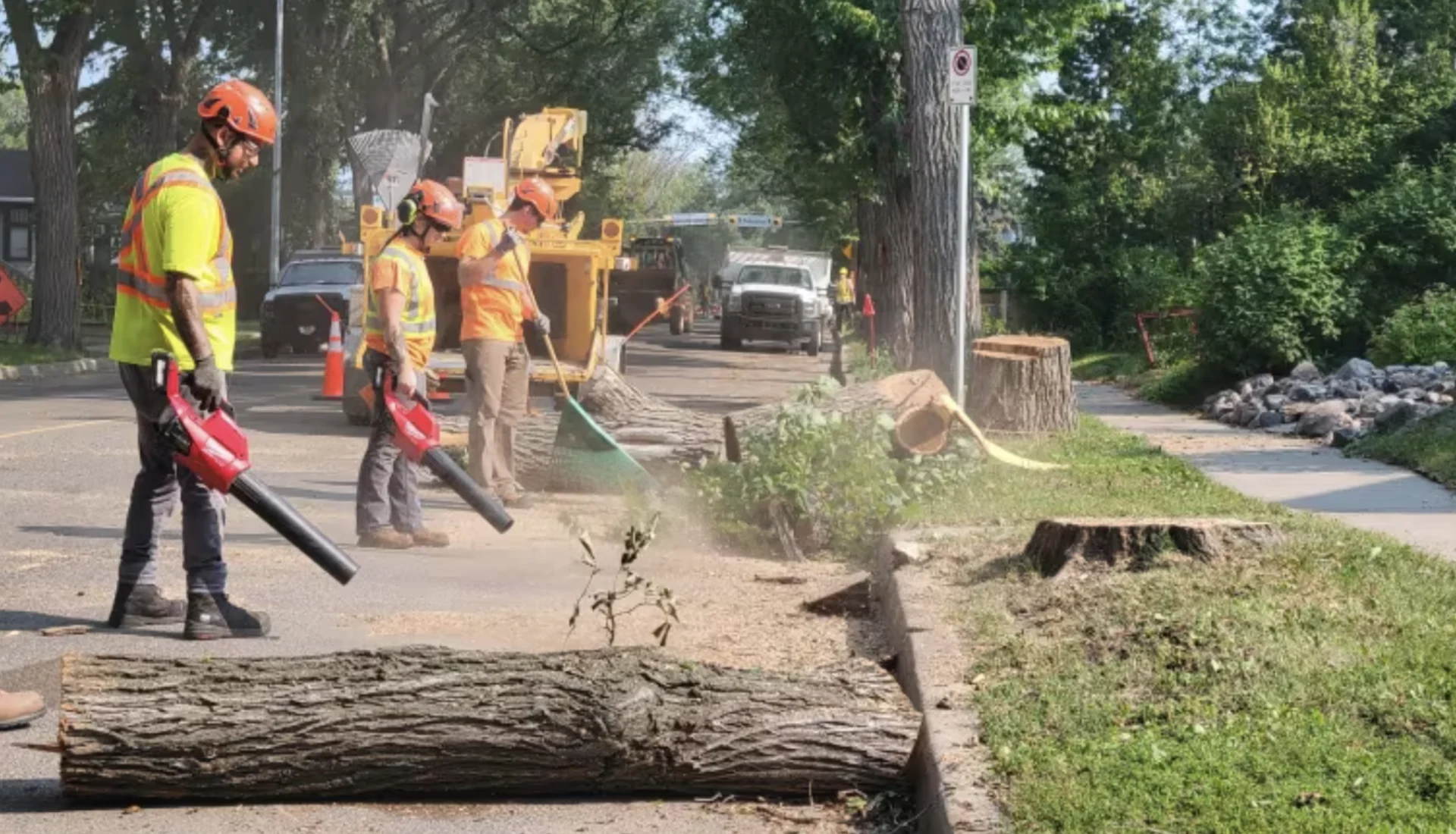
Dutch elm disease season sees record number of trees culled in Regina
Regina has culled 36 trees infected with Dutch elm disease this year, including seven taken down Wednesday in the Cathedral neighbourhood.
Thirty-six is already the most for a single year in Regina and Dutch elm season is only about half over, according to the city. Roughly 200 trees in the city have been confirmed to have the disease in the last 45 years.
The seven trees cut on Wednesday were all approximately 100 years old, the city said.
"If you want another elm or a like-for-like tree, you're gonna be waiting at least 10 years," Russell Eirich, manager of open space services for Regina, said.
He said the city has more than 70,000 elm trees, including private and city-owned trees, making the virulent disease a big problem.

Russel Eirich, Regina's manager of open space services, says the city has culled a record number of trees infected with the Dutch elm disease this year. (Kirk Fraser/CBC)
Eirich said this year's high Dutch elm count can be attributed to warmer temperatures through the winter and summer.
He said the disease can cycle down through the roots, cross into another tree and then pop back up. This is particularly problematic in neighbourhoods with a lot of elm trees.
"The reason these particular trees are a concern to us is they're so tightly spaced," he said.
The city will now look at other plant species to fill the spots left vacant by the culling.

Seven trees culled in Regina's Cathedral neighbourhood on Wednesday due to Dutch elm disease were all approximately 100 years old, the city said. (Shlok Talati/CBC)
Regina's landscape has grown from being a treeless grassland to having more than half a million trees, with most having been hand-planted, Eirich said.
"We really value our trees in the city," he said. "So losing a lot of elms to Dutch elm disease is concerning."
Jack Semple, a Cathedral resident, was watching as work crews climbed, slashed, chipped and bagged logs. He said it's something locals will have to live with.
"It's sad. You don't want to lose trees. These trees are magnificent, they're beautiful, but you don't want to let the disease spread either," he said.
Dutch elm disease is caused by a fungus carried by the elm bark beetle. Once the fungus takes hold it affects the vascular system of the tree, preventing it from getting water and eventually causing it to wilt and die.
Eirich said the beetles are very small, but people can figure out if a tree has the disease by checking if its leaves and branches appear shrivelled.
He said it's "virtually impossible" for the city to prevent the beetles from infecting trees. This makes culling trees where the disease appears the best option.
The city operates a monitoring and surveillance program that looks for signs of Dutch elm disease. If a tree is suspected to have it, a sample is taken and submitted to laboratory tests. When a test comes back positive, Eirich said, the city tries to cull the elm within 48 hours, then injects nearby trees with a fungicide.
Provincial legislation also prohibits pruning from April to end of August, because the sap scent from a fresh cut attracts the elm bark beetle.
Anyone who spots a tree with symptoms that look like Dutch elm disease is asked to call 306-777-7000 and alert Service Regina.
This article, written by Shlok Talati, was originally published for CBC News on July 24, 2024.
Watch a previously shared video on how to identify Dutch elm disease below:









